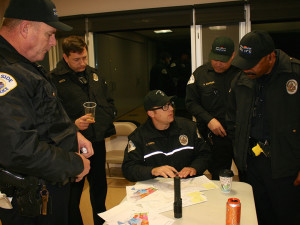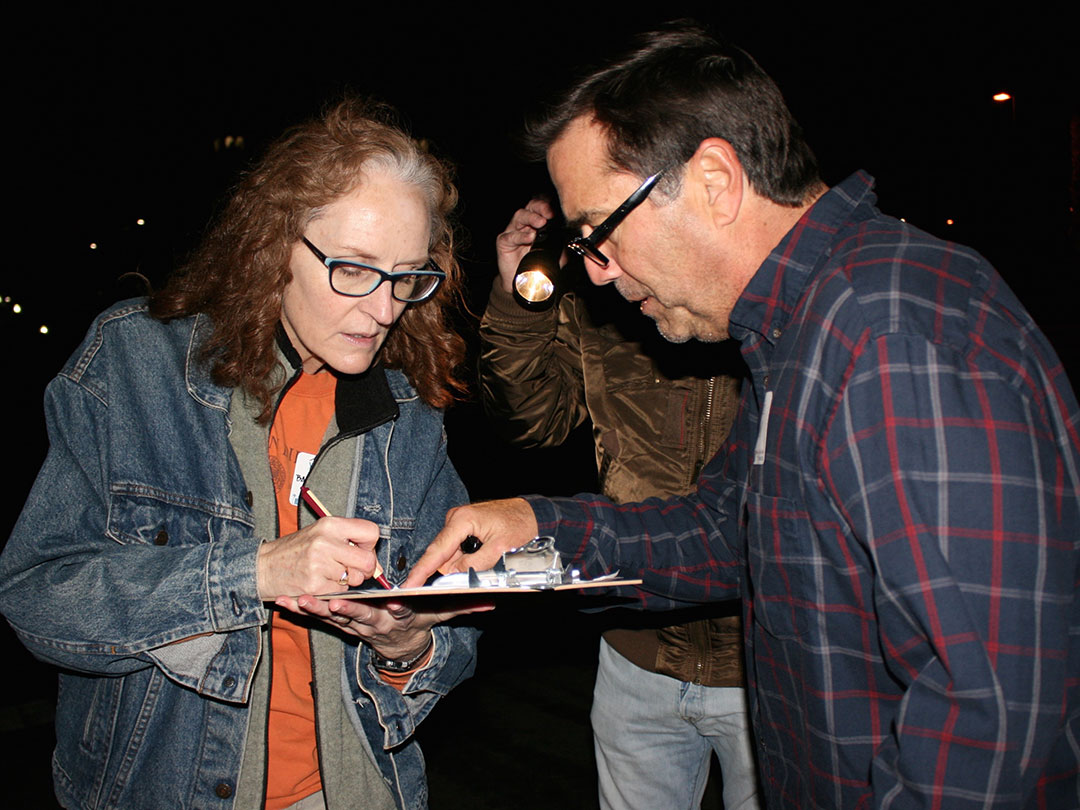OCEANSIDE — In the early hours before morning joggers began their run, or street sweepers scrubbed the roads, dozens of volunteers met at EL Corazon Senior Center to help with the annual homeless count on Jan. 29.
The Oceanside senior center has served as a meet-up site for the city count for the past three years. Counts are organized by counties nationwide during January to provide a point in time tally of how many homeless reside in cities.
The number of homeless is used to determine the amount of federal Housing and Urban Development funds allocated to cities and agencies working to solve homelessness. It also gives those involved in finding solutions a picture of the magnitude of the problem and trends over time.
“It does help us in receiving funding as well as us knowing what we’re dealing with, in as far as how many homeless we have,” Angie Hanifin, Oceanside housing program manager, said.
During Oceanside’s count no interviews were conducted. Volunteers passed out information flyers to homeless individuals they encountered about a future interview date.
Hanifin said later interviews would identify what types of people need help, including the number of long-term homeless and veterans.
Oceanside volunteers who gathered at 3:30 a.m. said they see the count as providing useful information.
Each volunteer group of two to three was given a map of a sector of the city to cover and a flashlight to help them navigate in the dark. Volunteers were tasked with marking the location on the map where they spotted a homeless person. Symbols were used to indicate if the person was in a tent, car, or was simply sighted.
There were also police officer teams to conduct counts in heavy brush areas that are often sites of homeless encampments. The police teams were led by a Homeless Outreach Team officer who works as an advocate to help city homeless connect with services and get back on their feet.
Volunteers Rafe Edward Trickey, Barbara Hamilton and John Jackson were assigned to a beachfront sector that stretched from Wisconsin Street Beach to Breakwater Way and three blocks inland.

Two hours into count they recorded sighting seven homeless people.
“I expected to see more,” Trickey said.
The count involved a mix of driving and scouting on foot. The three looked behind walls, under bridges and around buildings for homeless individuals who may be sheltered in place.
It took three hours to cover the area. Then the group headed back to the senior center with collected data.
Jackson brought a unique insight to the group. He had been temporarily homeless.
He said getting back on his feet after being jailed for a DUI was difficult. His car was impounded, his apartment was robbed while he was in jail, and bail, court costs and daily bills quickly mounted.
Jackson said it took him awhile to get sober, work and save enough money to rent an apartment.
“I slept on the beach,” Jackson said.
Jackson said what worked in his favor was that he has job skills, and works as technician in the entertainment industry where background checks are lenient.
“It’s whether you can do the job or not,” Jackson said.
He said securing a rental after being found guilty of a nonfelony limited housing options, but he was able to find an apartment.
Jackson added other homeless individuals are not as lucky. The loss of a job, marriage and child custody can be devastating.
Oceanside counted 150 unsheltered homeless individuals last year.



1 comment
If Stanford University’s right, manufactured housing is disappearing, especially in coastal cities. With a 9-12 year waiting list for Sec. 8/HUD housing, and little if any affordable housing planned, where will all the seniors, disabled, low income families, retired veterans go? Manufactured homes are the largest form of ‘affordable housing’ in the state; without it, what’s the plan for the future for those on fixed incomes?
Comments are closed.